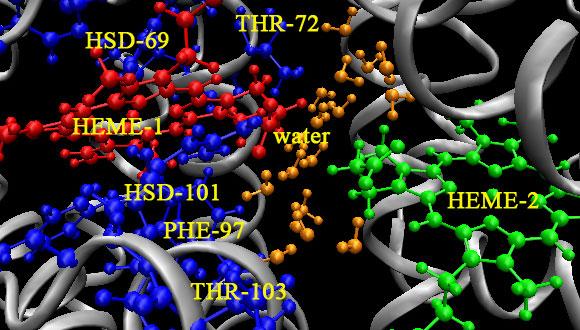Chemical Physics PhD Seminar
Controlled Formation of Radial Core-Shell Si/Silicide Crystalline Heterostructures
Kosloff, A.; Granot, E.; Barkay, Z.; Patolsky, F.
Abstract:
Nickel silicide is one of the most prominent materials for contacting transistors devices. Its formation involves the diffusion of Ni atoms into the Si lattice, proceeded by a solid phase reaction. In recent years, there has been a great focus to implement the silicidation process in the nanoscale regime. Several research works have investigated the diffusion and reaction of Ni atoms along the axial direction of VLS grown nanowires, resulting in axial nickel silicides/Si nanowire heterostructures. However, not much is known about the case of radial diffusion, having the potential to form an embedded conductive shell, thus creating novel Si/silicide core-shell heterostructures. Here, we investigated the radial diffusion of nickel atoms into silicon nanopillar cores, followed by nickel silicide phase formation and the creation of a well-defined shell structure. The highly-controlled formation of radial silicon/NiSi core-shell heterostructures has been demonstrated for the first time. In-depth crystallographic analysis was obtained by nanosectioning the resulting silicide-shelled silicon nanopillar heterostructures, giving us the ability to study in detail the resulting silicide shell structures. In addition, electrical measurements of the core-shell structures revealed that the resulting shells can serve as an embedded ultra-thin conductive layer. Finally, the diffusion process was also examined by in-situ TEM analysis, showing us the evolution of the diffusion/silicide formation reactions, influenced by the process applied temperature.
References:
Kosloff, A.; Granot, E.; Barkay, Z.; *Patolsky, F., Controlled Formation of Radial Core–Shell Si/Metal Silicide Crystalline Heterostructures. Nano Letters, Accepted for Publication, 2017.
Morphology Effect on Charge Transport in Doped Bovine Serum Albumin Self-Assembled Monolayers1,2
Edith Beilis
Abstract:
An evidence for considerable stabilization of doped bovine serum albumin (BSA) molecules upon adsorption on gold surfaces is provided. This is compared to the surface-induced conformational changes of the pristine BSA and its corresponding monolayer. The prisitine BSA unfolding phenomenon is correlated with dehydration, which in turn enables improved monolayer coverage. The stabilization mechanism is found to be partially controllable via nanodoping of the BSA molecules, upon which the dehydration process is suppressed and molecular rigidity can be varied. Our experimental data and calculations further point to the intermixing of structural characteristics and inherent molecular properties in studies of biological monolayers1. We further, explore the mutually interfering morphological and charge transport characteristics in realted BSA based self-assembled monolayers (SAMs). The challenges encountered by these cross-dependencies are addressed by means of surface spectroscopy techniques, combined such as to consistently account at high sensitivity for a broad range of surface properties. Applied to doped bovine serum albumin (BSA) SAMs, we show how the BSA conformation, its dehydration and monolayer assembly are all correlated. Moreover, the electrical properties, transport and charge trapping, are highly affected by the SAM compositional and structural state, with a specific roll of water molecules. Our results reveal and further demonstrate a useful approach to the complex challenges presented by (bio) molecular electronics2.
1 Beilis, E.; Belgorodsky, B.; Fadeev, L.; Cohen, H.; Richter, S, J. Am. Chem. Soc., 2014, 136 (17), pp 6151–6154
2 Edith Beilis, Yonatan Horowitz, Alon Givon, Gabor Somorjai, Hagai Cohen*, Shachar Richter*, J. Phys. Chem. C, 2017, 121 (17), pp 9579–9586


